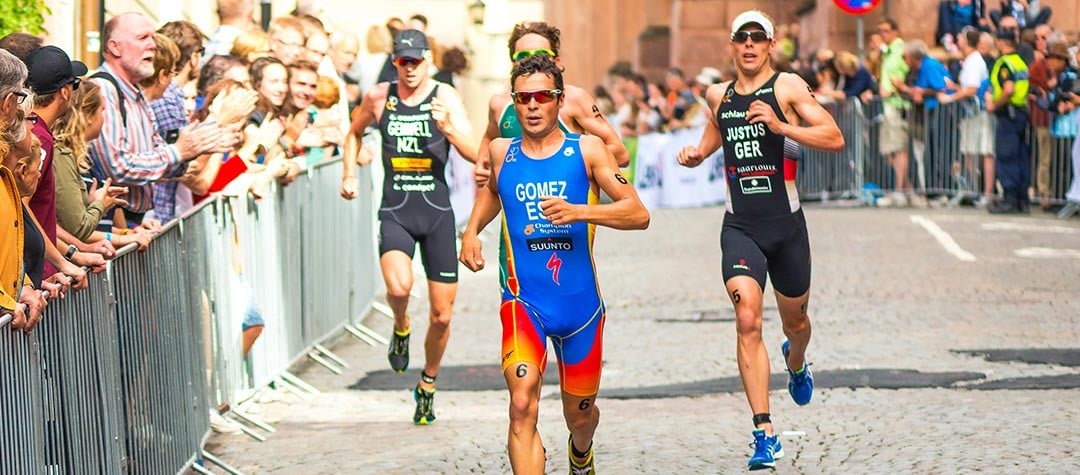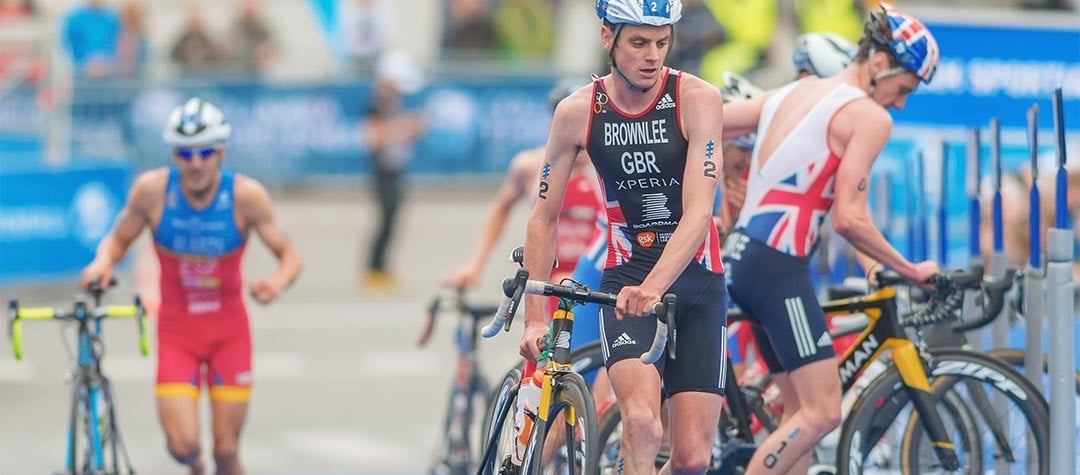Not quite sure to how using a heart-rate monitor (HRM) can aid your triathlon training? Will Clarke gives the lowdown on using a HRM to help your triathlon progress.
Heart rate is a great tool to have when training for triathlon. I think it’s something that every aspiring athlete should have, it’s a fraction of the price of a power meter and can be just as valuable, especially if you can use it in conjunction with power.
The majority of good sports tracking watches that you can buy now will also come with a heart rate strap or with heart rate tracking facility built into the watch. These watches are perfect for monitoring your training and giving you feedback during training.
Figuring out your training zones
The first thing you have to do when getting set up with your HRM is figure out your training zones. The easiest and most accurate way to do this is in a lab with a max test and a sub max tests. However not everyone has access to this, so then your best option is to do a 30 minute time trial (TT).
Go as hard as you can for 30 minutes on your bike and press lap on your sports watch after 10mins as typically in these first 10mins people go off too hard. The average heart rate from those last 20 minutes will give you your Lactate Threshold Heart Rate. From here you can work out your training zones.
Once you know your max you can have a good stab at predicting your training zones. Dividing them from Level 1 - Level 5 they are as follows:
Level 1 (under 68 per cent of Threshold Heart rate) is recovery. Very low heart rate and used for active recovery sessions.
Level 2 (69-83 per cent) is the Endurance zone. This is the zone that you’ll probably end up training the most in. If you do your easy club rides and jogs then you’ll most likely be operating in this zone.
Level 3 (84-94 per cent) is Tempo. This is the zone where you’ll stick when doing tempo and strength training. You’ll spend a lot of time training here for longer distance triathlons.
Sweet Spot Is high level 3 and low level 4. This is between 88-93 per cent of your Threshold Power and likely that most of your races will be in this zone. Sweetspot training will increase the amount of lactic acid that can be processed as fuel in your muscles, work here should push up all the other levels.
Level 4 (91-105 per cent) is your Threshold zone. This will be the same figure as your average HR from the test you did. This is for the real race specific training. Your effort will be no longer than 1hr in this zone.You’ll train here to push up your Lactate Threshold. The point in which you become anaerobic.
Level 5 (106-120%) is the VO2 zone. This is the maximum efforts for short periods of time aimed at increasing your VO2 max and your capacity. It’s unlikely that you’ll get a chance to look at your watch you’ll be working so hard!
Training in your Heart Rate zones
When you train religiously using Heart Rate you’ll begin to get this amazing feedback, where over time you'll notice your heart rate is getting lower while operating at the same speeds. This is exactly what we’re trying to achieve, an increase in your condition.
At first it may be quite easy for you to run at high level 3 because bio-mechanically it’s not hard to run at say 14/15 kph. However if you stick at it, train hard and you’re consistent with your training you’ll become so conditioned that it feels really hard to run in Level 3 because now you have to run at 16/17 kph to get your heart rate high enough to run within zone 3!
The key with training to heart rate is that you control yourself and stick in the prescribed zones that you or your coach prescribed for you.
The key with training to heart rate is that you control yourself and stick in the prescribed zones that you or your coach prescribed for you. Going to your max heart rate is not always the best way.
Through the winter you should work through the different zones building as bigger base as you can at the lower zone and working right the way up to training in zone 5 to sharpen you up just before the season begins. The zones are there to guide you.
Finally your heart rate can be interesting to look at to see how quickly you’re able to recover between repetitions. Say you’re running 5 x 1k on the track and directly after the rep you’re at 170bpm. If in the minute rest you’re able to get down to around 120bpm then it’s showing that you’re getting in very good shape for the season!
Training with heart rate can be especially useful during the winter and the spring. If you imagine a pyramid with the foundations or base training at the bottom and your top level V02 training at the top you should aim to gradually build through this pyramid ticking off each layer as the months roll on.
You should spend most of your time building your foundations in the winter so that once you hit the season your body is ready and conditioned enough to support the harder training that really makes you fast. Heart rate is a great way to keep you on track with that.
If you know your training zones well then it’s likely that you’ll stick within the range and keep your training under control rather than getting too carried away too quickly. It’s also motivating to know that during your harder runs tempo runs you’re capped at this intensity so how hard can it be, tempo runs should be under control after all and not maximal.
You should start to notice that you’re able to run at the same speeds as before but with a lower heart rate.
As you go through the winter, if you’ve been using your heart rate throughout, you should start to notice that you’re able to run at the same speeds as before but with a lower heart rate. That there is a great sign that your conditioning is improving and your training is working well.
It’s also useful to see how quickly the heart rate recovers between repetitions. It gives you an indication of your fitness level and how much recovery you need between repetitions. If for example you finish a rep and your heart rate is still very high between reps it’s likely that you should take more recovery before the next rep.
Limitations with heart rate monitoring
There are some cases where using heart rate for your training isn’t so useful. When interval training, especially short efforts, it obviously it takes your heart rate a fair time to jump up and react to the intensity so you can’t rely on trying to hit a certain zone so quickly. If you are able to do then it’s likely you were pushing too hard for the session. So in most short and maximal sessions it’s not a useful tool to use during the training.
Overload is an important principle of any training programme and in this period you’re likely to be pretty tired and that often suppresses your heart rate. Athletes will commonly report that they had to work super hard to just reach the zone, if they did at all. So on these days it’s not much use trying to hit your training zones if your heart rate seems lower than normal. This can also be useful information though as it means that you’re getting tired and you don’t really want to be training like this for too much longer.
Finally monitoring your heart rate can be very useful when you’re starting to feel run down or ill and you’re questioning whether to go training or not. If you take your heart rate first thing before you lift your head from the pillow and it’s more than 15 per cent higher than normal then you should call the training day off.














